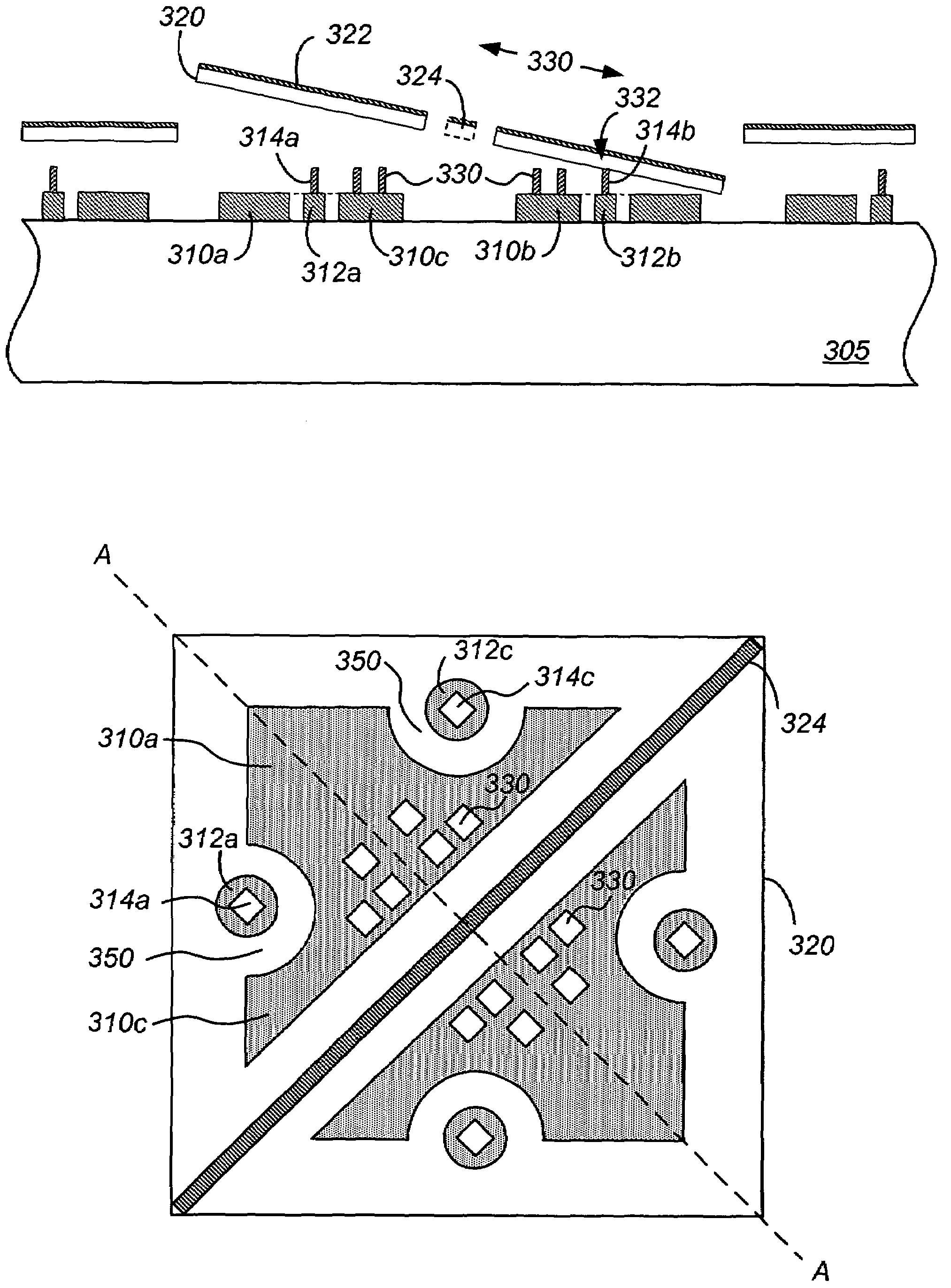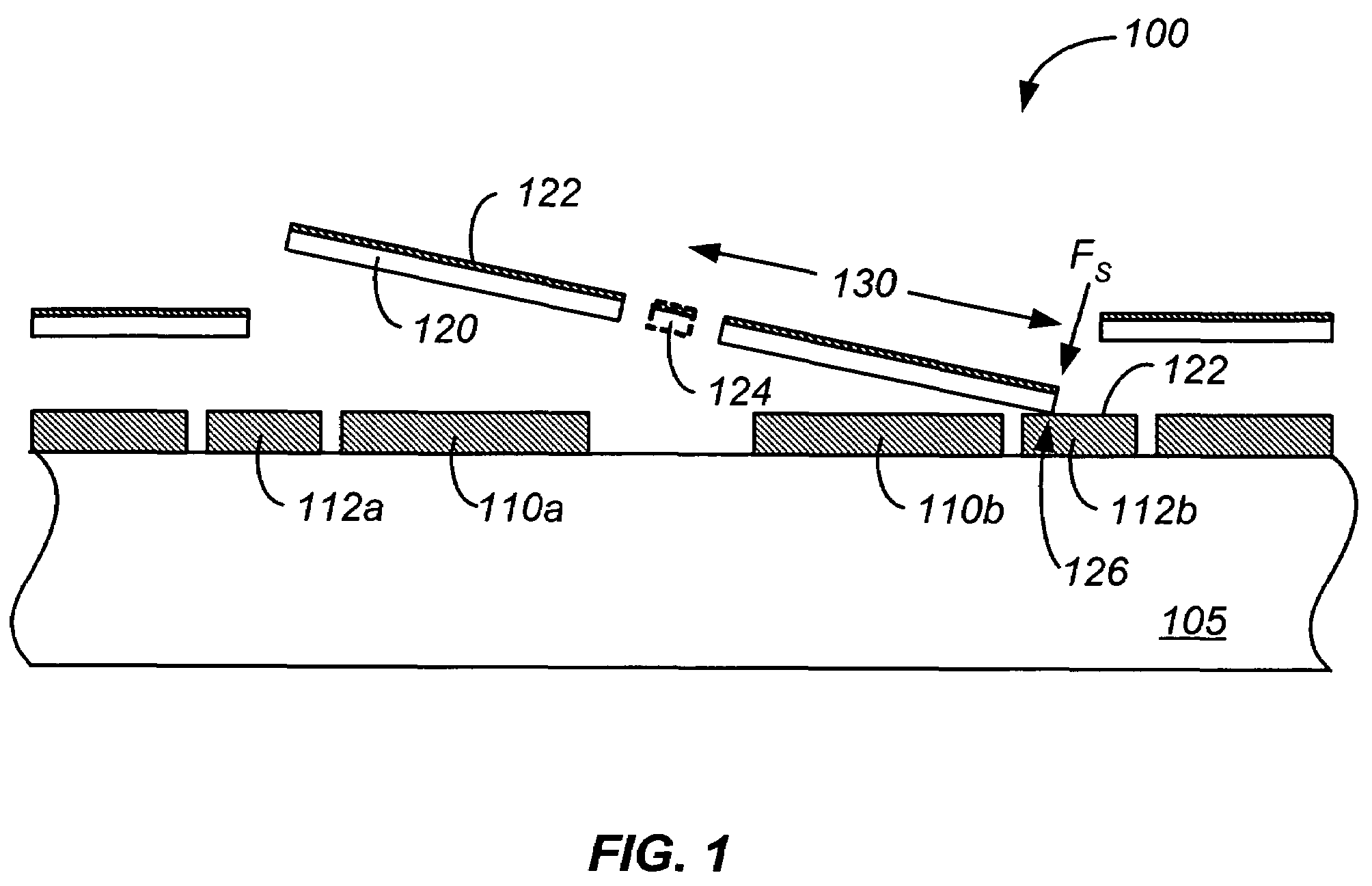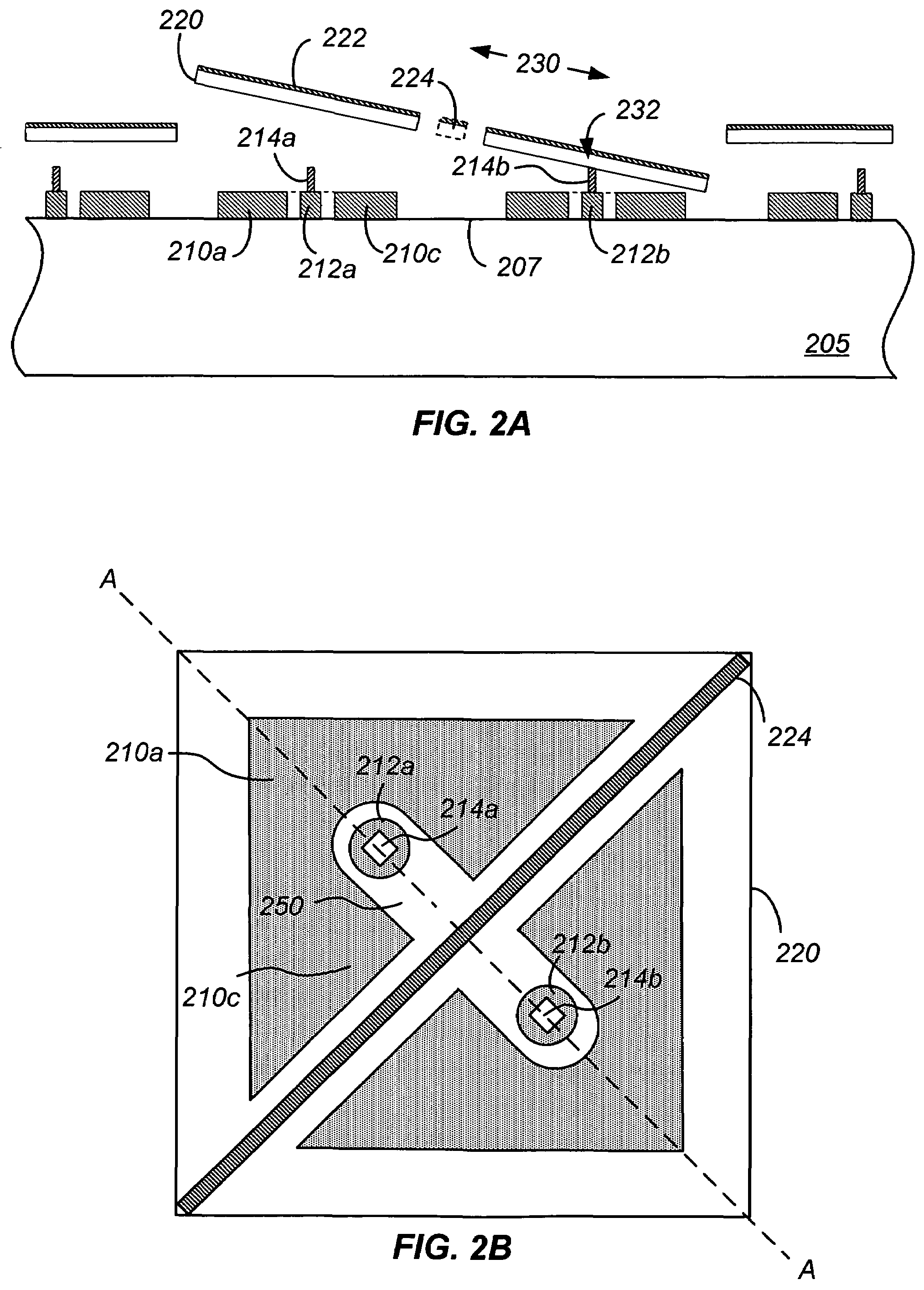Method and structure for reducing parasitic influences of deflection devices on spatial light modulators
a technology of spatial light modulator and parasitic influence, which is applied in the field of manufacturing objects, can solve the problems of difficult coating on small components, inability to achieve parasitic influence, so as to reduce parasitic influence and reduce parasitic force
- Summary
- Abstract
- Description
- Claims
- Application Information
AI Technical Summary
Benefits of technology
Problems solved by technology
Method used
Image
Examples
Embodiment Construction
[0016]Embodiments according to the present invention provide a method and structure for reducing parasitic influences of deflection devices on spatial light modulators. Merely by way of example, the invention has been applied to a spatial light modulator including a micro-mirror with reduced parasitic forces. The method and structure can be applied to other electro-mechanical technology as well, including actuators and sensors.
[0017]FIG. 1 is a simplified cross-sectional illustration of a conventional spatial light modulator. Suspended member 120 is suspended at a predetermined height above a substrate 105. Suspended member 120 has a reflective surface 122 coupled to the member. In addition, a torsion spring 124 is coupled to both the suspended member and a support structure (not shown) on substrate 105. In the figure, an electric potential has been applied between electrodes 110 and the suspended member, resulting in tilting of the suspended member in a clockwise direction and plac...
PUM
 Login to View More
Login to View More Abstract
Description
Claims
Application Information
 Login to View More
Login to View More - R&D
- Intellectual Property
- Life Sciences
- Materials
- Tech Scout
- Unparalleled Data Quality
- Higher Quality Content
- 60% Fewer Hallucinations
Browse by: Latest US Patents, China's latest patents, Technical Efficacy Thesaurus, Application Domain, Technology Topic, Popular Technical Reports.
© 2025 PatSnap. All rights reserved.Legal|Privacy policy|Modern Slavery Act Transparency Statement|Sitemap|About US| Contact US: help@patsnap.com



